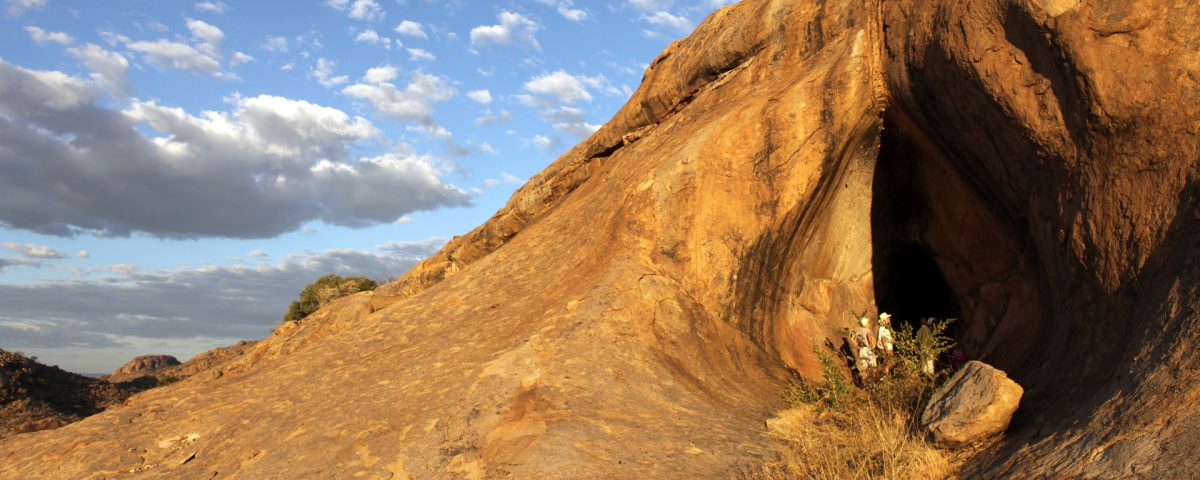
Is rainy weather a pain? Not in Namibia!
January 30, 2017
Mysterious Namibia
February 1, 2017Compiled Bill Torbitt | Photo ©Erongo Wilderness Lodge
Cave register
Namibia is not widely known as a cave diver’s paradise, but the website Namibweb.com has a cave register listing some 110 artefacts, ranging from real caves and rock shelters to sinkholes and craters, in theory providing plenty of subterranean opportunity for caving enthusiasts (speleologists). However, not may of Namibia’s caves conform to the cartoon image of the hairy caveman, with wife and/or club in the hand, standing in front of the structure with a fairly comfortable-looking archway-style entrance. Nor, due to lack of water, do you generally encounter traditional arrays of stalactites and stalagmites. That said, we do have the world’s largest underground lake (see below). And yes, there is a cave with some stalactites – Gamkarab in the Outjo area.
Namibia’s longest cave system
The most accessible cave system (from Windhoek) and the longest (nearly 5km) is Arnhem. With its on-site facilities and accommodation, this is basically the only ‘tourist’ cave in Namibia. It was discovered in 1930 and for years was used solely as a source of bat guano, which the six still-thriving species of bat inhabitants are presumably continuously replenishing. While it has no stalactites or stalagmites and is exceedingly dry and dusty, it is enthralling to explore, especially when visitors are told by the guide to switch off their torches and are then plunged into a primeval darkness.
Sinkhole lakes
Near Grootfontein are two curious natural wells or sinkholes – the Otjikoto and Guinas ‘lakes’ – which were formed by the collapse of surface limestone, exposing groundwater in the process. Otjikoto is an underwater national monument, where the disintegrating German forces during the First World War dumped some of their armaments to prevent them from falling into South African hands. Guinas is more remote – it is the home of a unique fish species Tilapia guinasana. The lakes present an interesting visual contrast – Otjikoto is dark blue, Guinas emerald green. Another impressive feature probably also caused by the collapse of the roof of a former cave, is Wondergat in the Khorixas area, largely undocumented and difficult to find, but offering an awesome view into the nether world. Take note that these features have no protective fences around them, so be careful!
An absent national monument
Many of the caves discovered and cursorily noted by travelers, explorers or farmers, were never properly mapped or surveyed, or even had their position recorded. This could easily happen in the days before GPS coordinates. Ganachaams, in the Tsumeb area, also tantalisingly called the Glittering Falls by its discoverer in as late as 1974, is the only example of a declared national monument whose precise location has been lost!
Phillipp’s Cave
Another well-visited cave of a totally different nature is Phillipp’s Cave in the Erongo Mountains north of Karibib. Containing a famous rock painting of a white elephant and many others, it is surrounded by an evocative rock formation called Bulls’ Party, due to its resemblance to a group of conferring bovines. the pre-historian Abbé Breuil wrote an entire book on the cave, but attributed the paintings to a Mediterranean people, on the mystifying assumption that local people would be incapable of producing them.
Underground lakes
The most beautiful cave, alas not accessible to any but professional and well-equipped cavers, is Dragon’s Breath near Tsumeb. If you scale down a 60-metre approach shaft, you will encounter an ethereal, crystal-clear, two-hectare-wide underground lake, the largest in the world, the ‘breath’ referring to the vapour formed when warm air from the world above strikes the cold waters. Harasib is even deeper, with a beautiful cobalt-blue lake 120 metres beneath the surface.
This article was first published in the Flamingo August 2011 issue.


